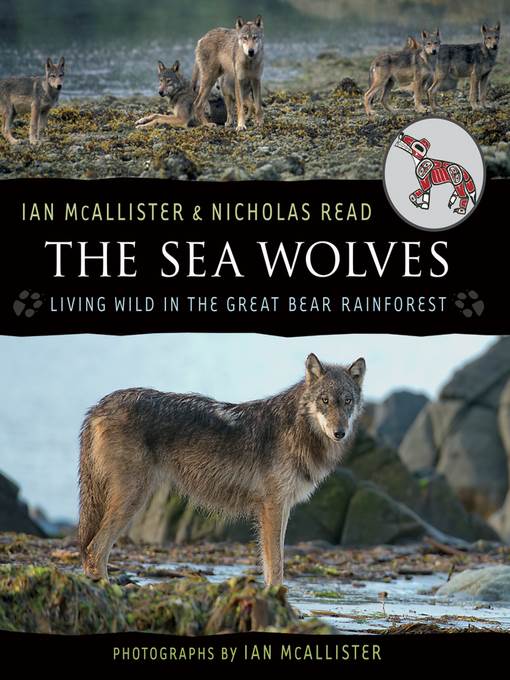
The Sea Wolves
Living Wild In the Great Bear Rainforest
فرمت کتاب
ebook
تاریخ انتشار
2010
Lexile Score
1110
Reading Level
6-9
ATOS
7.1
Interest Level
4-8(MG)
نویسنده
Nicholas Readناشر
Orca Book Publishersشابک
9781459805897
کتاب های مرتبط
- اطلاعات
- نقد و بررسی
- دیدگاه کاربران
نقد و بررسی

November 22, 2010
In a companion to The Salmon Bears, McAllister and Read set out to prove that "if you put aside all the bad press they've received in North American history, European fairy tales and Disney cartoons... you'll discover that wolves are fascinating," delivering a engaging account that focuses on the wolves that inhabit British Columbia's Great Bear Rainforest. Aug-mented by a bounty of sharp photos taken at close range (that say as much about this stunning section of the Pacific coast as they do about the wolves) and "Wolf Bites" sidebars about everything from the animals' social hierarchy to the differences between wolves and dogs, the authors provide a comprehensive study of these wolves while cautioning that, in contrast to their fierce image, they are quite vulnerable to environmental changes and human behavior. Ages 8–up.

September 15, 2010
Gray wolves genetically distinct from their inland cousins live along the coast of British Columbia in a partially protected area called the Great Bear Rainforest. This companion volume to The Salmon Bears (2010) describes their lives, demonstrating ways they've adapted to this unusual habitat. Opening with a chapter about wolves' "Bad Rap" in the rest of the world, the authors point out that the First Nations peoples who have lived among them have honored them for generations. Addressing readers directly, they trace the wolves' year: spring births, summer's easier living, the fall salmon run and hard times of winter. Sidebars add information. This extensive, informative text is illustrated with remarkable photographs taken by McAllister, who has lived in and studied the area for years. They show the lush, old-growth forest and rocky shoreline and a variety of animals that share this habitat, but the wolves are the stars: at rest, at play, on the prowl and catching fish. Lengthy captions sometimes repeat information given in the text, almost serving as summaries. Fascinating and useful. (website, suggested reading, index) (Nonfiction. 9-14)
(COPYRIGHT (2010) KIRKUS REVIEWS/NIELSEN BUSINESS MEDIA, INC. ALL RIGHTS RESERVED.)

February 1, 2011
Gr 5-9-The authors make no pretense of objectivity in their overview of the lives of the sea wolves that live on the mainland and coastal islands of British Columbia's Great Bear Rainforest. They devote much of the first chapter to debunking myths about "big bad" wolves and stress their similarity to humans. Such comparisons crop up elsewhere in the text, which follows the animals through the seasons, beginning with spring births. Readers learn about the wolves' social structure, habitat, survival skills, and physical characteristics. The text explains how coastal wolves differ from other wolf populations in size, coloring, and swimming ability. Advocacy for their survival permeates the book, especially the concluding chapter, where the authors admonish readers to change "our greedy, short-sighted ways." The only humans they admire are First Nations people, who have coexisted peacefully with wolves in the GBR for hundreds of years. The book's style is informal and conversational. The arresting images of wolves and their surroundings reveal McAllister's passion for his subject and his skill as a photographer. Librarians might consider purchasing the volume for its captivating, full-color photos and its introduction to a unique subject while keeping in mind the heavy doses of advocacy that accompany the information.-Kathy Piehl, Minnesota State University, Mankato
Copyright 2011 School Library Journal, LLC Used with permission.

December 1, 2010
Grades 4-7 If you put aside all the bad press theyve received in North American history, European fairy tales, and Disney cartoons . . . youll discover that wolves are fascinating. In this enthusiastic effort to rebrand wolves, the authors of The Salmon Bears (2010) offer a warm, informative introduction to a distinct strain of wolves that inhabits the British Columbian coast. One of the last populations that hasnt been affected in a big way by human contact, these unusual coastal wolves have much to teach us about the animals innate traits and characteristics. In succinct, conversational language, the authors present attention-grabbing facts, from the wolves incredible swimming abilities to the extraordinarily harmonious, ancient relationship between the animals and the First Nations people who share their landa vast, awe-inspiring expanse of interlocking landmasses and waterways. McAllisters highly expressive, close-up photos of the beautiful animals hunting, lounging, and nuzzling will easily draw browsers, while a call for conservation and suggested additional reading may spark further student interest. A strong choice for both classroom science units and personal reading.(Reprinted with permission of Booklist, copyright 2010, American Library Association.)

























دیدگاه کاربران